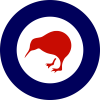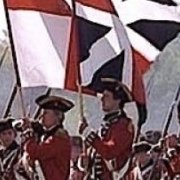Leaderboard
Popular Content
Showing content with the highest reputation on 24/04/24 in all areas
-
Hi All I'm not sure if this belongs here but it is a flying machine I guess. Having seen one of these built by a friend at my local clubs meet I thought I give it another go. The last time I built this I was but a lad and it came with a Hercules. This is the Airfix classic kit built straight from the box using decals from the spares box. It's showing its age as I think I spent more time cleaning it up than actually building it. But boy have I enjoyed it, I already have another on the go. C'mon Airfix how about a newly tooled Mk2. Hope you like it Regards Glenn.5 points
-
Here is the Zvezda 737 Max 8 finished as Norwegian’s EI-FYA “Sir Freddie Laker” which I believe was the first Max to enter service in Europe in June 2017. Freddie spent some time on Norwegian’s short-lived EDI-BDL route but its brief career with Norwegian ended with the grounding of the Max in March 2019. The aircraft never flew for Norwegian again and remained in storage until the summer of 2023 when it finally found a new home with Smartlynx Malta as 9H-GEM. At the time of writing it is on lease to Andolujet. Generally the build is OOB but a couple of accuracy points need attention. Firstly the familiar V-shaped apu intake aft of the right rear door has gone from the Max. In its place is a hinged flap which opens outwards when the apu is running. Zvezda have ignored this, probably in the interests of sprue commonality. It’s an easy enough fix with drill, files, plastic sheet and plastic rod. I guesstimated the dimensions from photographs although when I see the model photos I think it might be fractionally small. Secondly, despite giving us a nice new sprue of Max-related bits, Zvezda have missed the Max’s extended nose wheel leg, needed to accommodate the larger engines. On the real aircraft this is approximately 20 cms longer than the 738 and gives the Max a slightly different sit. I achieved the extension by gluing a piece of plastic rod into the recess on part D15. Once this was firmly set I trimmed the rod to just under 1.5mm and drilled it to take a length of fuse wire. I removed the locating lug from part D20 which was also drilled to take the wire. The two halves of the leg were then superglued together before part D4 was added. It’s rough and ready but gives a reasonably strong assembly which should withstand normal handling. If anyone has a better method I’ll be delighted to hear it. Paint is Halfords Appliance Gloss White and Racking Grey with Hycote Post Office Van Red. Metallics are by Tamiya and Revell. Livery decals are by Lima November. These are generally OK and even take account of EI-FYA’s different engine marking. Unfortunately they are let down by the less than wonderful reproduction of Freddie on the fin and some minor annoyances like oversized fuselage registrations and the slightly indifferent fit of the winglet decals. To my eyes the blue stripes on the winglets are too broad and if I did the livery again I think I would mask and spray the winglets. I supplemented the LN decals with Authentic Airliners windows and details from the spares box. Thanks for looking and constructive criticism is always welcome. Dave G My approach to correcting the nose wheel leg.... / ... and the final result3 points
-
Undercarriage doors, lights, Sidewinders, and drop-tanks fitted. Which brings this build to completion.3 points
-
G'day again Chums,some more twiddly bits. Col,cheers old chum.Don't worry,so am I. It turns out that I had it right in the first place.Much searching didn't turn up the RAF Pilots Notes but did I did find this video which seemed to show promise but didn't reveal what I wanted to know. The RAAF version of the Pilots Notes is relatively easy to find and is buckshee here https://www.jeversteamlaundry.org/tigpictures.htm and the relevant bit states 7. Elevator and Rudder Trim (i) Longitudinal trimming is effected by spring loading the elevators. The required tension is obtained by a lever and quadrant situated on the left of each cockpit. These trimming springs (39) are both adjustable for tension in the rear cockpit. 8. Automatic Slots (i)Auto slots (7) are fitted to the top mainplanes and are provided with a locking gear. The operating lever and quadrant are situated on the right hand side of the rear cockpit below the instrument panel. and it is supposed to look like this,photo found on Pinterest. This means I've now had to make more of them. The Sutton Harness for the front seat has been made too. I'm pleased that I didn't attach the cowling,the view into the cooling duct should look like this,photo found here http://www.grubby-fingers-aircraft-illustration.com/tiger_moth_walkaround.html which means that I have some more work to do. Thanks all for looking in,more soon.2 points
-
Evening everyone, I'm nearly finished with posting all of my previous builds now, but here is another one. This is an Airfix Eurofighter Typhoon. Here are the photos. All the best, Rick2 points
-
Oh no!!! I did it again! I built another bi-plane! I need help! This is the Matchbox issue of the kit in it's multicoloured release. I was looking through the WIP forum and found Vulcanicity's build and that did it, I had to have a go at following his excellent build. I added interior detail using plastic card, stretched sprue and wire. The engines were detailed as per Vulcanicity's work and I also copied his work in the main bomb bay. For the rear fuselage sides, my attempt at replicating the linen covering was to applied lengths of wire to represent the structure and cover it with self adhesive aluminium tape. My finish is not as subtle as Vulcanicity's, but I think it's better than what the kit provided. The under wing bomb racks were etched items from Marabu Design, the gun mounts are from Eduard, but I replaced the etched gun support with wire. The Lewis guns are from Gas Patch. For the bombs I raided Italeri's Stirling kit. The model was painted with Tamiya acrylics. Thanks for looking, Angelo.2 points
-
Completion of decals, de-icers around the intakes - and matt coat overall.2 points
-
I think I've sorted the rear suspension and back axle, and hoping I have a reasonable ride height when the wheels go on. As you can see, the differential is VERY nonscale but it's on. The distance of the brake drums from the bodywork is an estimate. The kit exhaust pipe is designed to fit in the gap between the wheel and body, although many exhausts in photos arch right up and over the mudguard This is the structure underneath... And a start has been made on the front end. I made my springs with the little tube pieces embedded just like the back pair, and then realised they weren't needed up front. They don't hang outside the chassis members, so I flattened the front ends and I'm making wire links for the back attachments. The main axle is brass wire to facilitate bending and adjusting. It fits through an Ali tube before it's cranked, and that tube straddles across between the springs. Luckily my engine structure underneath was just about right to give a central attachment area for the axle. Again, the measurements are done on a wing and a prayer but the brass wire should give me some scope for getting the right look. The other little achievement is the fabrication of a cover sheet for the back of the car, what I'd call a tonneau. Just some decent fine paper treated with pva to hold its shape, and a coat of..... ermm I think it was mig acrylic "tyre and rubber". I think I'll forget about fixing plastic down in the space above the back axle. No point really when this goes on. 😎1 point
-
Here is the Zvezda Boeing 737-700 finished as SE-RJX “Vagn Viking” which as far as I know was the only 737 to carry SAS’s current livery. Somewhere along the way she also managed to acquire an A350-style black windscreen outline, no idea why. SAS introduced their new livery in September 2019 when the days of the 737 fleet were already numbered and only SE-RJX had been repainted by the time Covid 19 brought everything to a stop. To the best of my knowledge the rest of the 737 fleet ended their SAS careers still in the previous livery which I think dated back to the 1990s. I was never a fan of the sandy grey with orange-red engines but I do like the bright, fresh look of the 2019 scheme so here is my take on it. The build was straightforward and largely OOB with the addition of some Daco p/e and a couple of small details from plastic sheet. The light grey is a by-the-eye mix of Mr Hobby H-1 and H-338, roughly 2:1. Blue is Mr Hobby H-5. Photographs were ambiguous about whether the wings, stabs and pylons were Boeing Gray (as they were in the old livery) or the same colour as the fuselage. I opted for the former and used Halfords Racking Grey. If I’m wrong, so be it. The engines are AK Interactive Aluminium overpainted with my favourite brushing satin varnish - Klear mixed with a few drops of Tamiya Flat Base. Other metallics are by Tamiya and Revell. Livery decals are by Lima November with Authentic Airliners windows. Detail decals came from the kit sheet and the spares box. Thanks for looking and constructive criticism is always welcome. Dave G1 point
-
1 point
-
Republic RF-84F Thunderflash AG52, 1 Staffel (yellow trim), West German Air Force Erding Air Base,1963 Many years ago I bought 2 Italeri 1/72 RF-84F kits. They came to life recently after I came across a German ‘F-40’ publication that I had forgotten about, while sorting a stash of reference books. They were decent kits in their time, but they are of that 70s or 80s period when all kits had raised panel lines and minimal detail so would need some work to bring them to a passable standard. Thing is, though, I just wanted to see what one of these would look like built up, so I took the decision to build the first one old style, straight from the box, including the weird interior – pilot and all – and kit decals. I used the Italian markings provided. I’m glad I did that because a) it provided a good reference for what needed working on and b) I probably wouldn’t have wanted to done all that work twice! Should I have just bought the recent Sword kit? Probably, but what would I do with two Italeri kits if I didn’t build them? Anyway, I decided to build this one, from the F-40 book: A couple of pictures of the finished model before I write any more words: Here are the two models together: This is a summary of what was needed to turn the Italeri kit into something acceptable: Panel line rescribe Addition of spoilers to the wing top surface just ahead of the flaps, which I cut off and repositioned in the down position. Italeri had completely ignored the complex spoilers – I used a photoetch set from Airwaves designed for the Airfix F-84F. New wing fences added from thin plasticard. The marked positions for the fences on the kit wings were far too outboard. Air intake reshaped in plan view – see photo: Machine gun ports added to the front of the reshaped air intakes (something else ignored by Italeri). Cockpit detail scratch built and resin Martin Baker seat fitted (German RF-84Fs had their early Republic seats replaced sometime before camouflaging) Airbrakes replaced by the Airwaves photoetch set for the F-84F. They really didn’t fit the Italeri kit so I was pleased to find photos with airbrakes slightly open. Drop tank pylons shortened and rebuilt to give a better sit to the drop tanks. Tailplane hinge added to show the drooped position with hydraulic power off. Nose camera windows increased in size – see photo for comparison: Wingtip pitot tube replaced with a sewing needle (I did this on the Italian one also as the kit version is ridiculously fragile). Paint was Xtracolour enamel over Tamiya acrylic primer, then Klear coat before and after decals and Xtracrylic ‘Matt’ varnish (Matt in inverted commas because it actually gives a semi-gloss finish, which looked just right in this case!) Decals came from some old Superscale sheets for German F-104, RF-4C and G-91s, with stencils from some Modeldecal RF-84F and F-84F sheets. An enjoyable project but I would go for the Sword kit if I wanted another one….1 point
-
Good luck! She's coming out quite nicely.1 point
-
Here is my take on the german Sd. Kfz. 222 scoutcar. A nice kit from hobbyboss. A lot of nice details, crisp moulding of the parts and overall a joy to build. The figures are from Warfront. All comments are welcome. Thanks for stopping by and taking the time to look.1 point
-
Hi, Savoia Marchetti SM 55 was a very successful design of an Italian flying boat in 1924, so 100 years ago (what?!). It was produced in short series of different variants, which although similar in general outlook differ a lot in details. Almost 250 of them were constructed. The Royal Romanian Naval Aviation (RRNA) got seven Savoia Marchetti SM 55A about 1930. They served till the end of WW2 at least. The WIP is here This is a photo from a private resources, which I have found on Romanian FB, I was trying to follow it assuming Italian Grigio Scuro as top camo color The model is Dora Wing SM 55A kit with some modifications on floats surface (see WIP when need details) Here is the results: This is my second SM 55, the first (SM 55X) was done five years ago from Delta 2 kit in Italian livery from Spanish Civil War. I discussed also many of my doubts in separate threads I am very grateful for all comments in all past threads and in the current one as well. Regards Jerzy-Wojtek #5/20241 point
-
I assume you're waiting for the group photo of the Savoia seaplanes until S.66 is finished Well done, brother 👍 Cheers Michael1 point
-
Another model flew into the workshop, one of those that are lingering in the cupboard and I still have a lot of it and my wife is whining about how much of it (good stuff) I still have and when I'm going to do it. So I'm getting on with the build, but one that's straight out of the box and how I'm going to make it. Introducing the Curtiss A-8 ‘SHRIKE’ in 1:48 from Czech Model, for me it's a bit of an exotic theme and there will be such themes between Italian and Polish themes. And this is how the box and its contents look like, and there is only one painting and two markings of the machine 80 and 83.1 point
-
So, after the DAK diorama my youngest son (9 years old) wanted to try some modeling so we decided on this kit from zvesda, the SU-122. A nice starter kit, not too difficult and a great way to introduce my son in this great world of scalemodeling. As you allready guessed this will be an oob build. My goal is to keep my son interested trough out the build. Great way to spend some father son time together. There is a strict agreement on the tasks. My son wants to cut all the parts from the sprues and i'm in charge of cleaning and glue. Together we read the instructions and i'm explaining all the do and don't while we are building this russian tankdestroyer together. So far we got the lower hull completed. When it was bedtime i asked him if he wanted me to continue the build but he was adamant..... he forbid me to continue and he wanted to go again tomorow. This is the new generation guys 😄 This will not be the most complex build. No scratchbuilding, no aftermarket parts etc. Just fun with my son. We will keep ypu guys posted! Cheers! 👍👍👍1 point
-
It seems like a long time since I posted an update. Blame the good weather (yes, beach weather in April, strange it may seem). I somehow managed to mate all four nacelles with the wings, but not very well. Viewed from above, things don't look great. Viewed from underneath, things are even worse, more so than this photo appears to show. I have tried to fill in these horrendous gaps. Some of the ugly blemishes on the upper wings. This particular area can at least be cleaned up without removing any rivets. I messed up the main canopy trying to fit it, requiring much cleaning and polishing. I then applied plastic strips to the fuselage so that the canopy would sit neatly in place, or at least much better than before. It was a similar story with the upper nose transparency. The lower nose transparency I somehow managed to cover in glue and gunge, but it's looking much better now. The tail cone transparency was the first part in a long while that fitted more or less as it should. So there is still a huge amount to do. I will hopefully have more progress to report tomorrow.1 point
-
Retirement.... Its a tough and dirty job. But by golly somebody's got to do it! To @Pete in Lincs... One more of us. One less of Them! Salute!1 point
-
Another two-for-one with this post. These were both old Novo kits from around 1979 given to me by the same person who gave me the two Karas I posted earlier, with the same stipulation: build them, paint them and give one back. There were no problems with the fit of any of the pieces aside from the clear parts, and the decals were in surprisingly good condition. As per usual, I used AK Real Colors as the paint for both of them. This was the first time I've put invasion stripes on a plane, and I think the end result looks good, but I will make the black lines a bit thicker next time. I also should have put the stripes on the wings closer to the fuselage, but the underwing rocket launchers were a real pain to mask off, and I ended up cheating. ----------------------------------------------------------------------------------------------------------------------------------------------------------------------------------------------------------------------------------------- Here are a couple of Fairey Fireflys: a British-made carrier-borne fighter, sub destroyer and reconnaissance plane. One of these depicts a British Firefly in the Fleet Air Arm, sometime around the Overlord landings; the other was my attempt at replicating the RCAF version that the Canadian Warplane Heritage Museum currently has in its collection. The Firefly began production in 1940 with its first flight in 1941, and its official deployment starting in 1943. It used the Rolls-Royce Griffon engine (used also by later Spitfires, Seafires and Tempests), and the two versions I did are equipped with cannons and underwing rocket projectiles. Although used in every theatre (notably seeing some action off the coast of Norway against the German battleship Tirpitz), the Firefly was mainly used in the Pacific against Japanese targets. It was also the first Allied plane to fly over Tokyo during the war. After the Second World War, the Firefly continued to be used by the Commonwealth nations, and was prolific during the Korean War.1 point
-
Paint and glue flung liberally around the place. And more brass bending. Thanks for looking, Cheers, Alistair1 point
-
Not much new to report since my last post. I was traveling last week and will be back on the road again this coming week. I'm hoping to get the landing gear in place before I leave again. My big challenge will be to get the main gear attached at the correct angle(s). As can be seen in the drawing below, the main gear legs tilt inwards slightly (about 2-degrees), while at the same time tilting toward the nose with a 10-degree angle from vertical: There's a fair amount of slop where the main gear attaches to the wing (mainly because my replacement brass legs were designed for the Monogram kit, but also because Trumpeter's attachment points are very shallow). I need to be able to 1) fix the gear at the correct angles, and 2) somehow glue them in place while keeping them at the desired angle. Toward this end, I've made up a set of templates with the correct angles and procured some epoxy putty with a reasonable working time (about 15 minutes). Doing one leg at a time, I'll put a dab of putty in the wheel well, insert the landing gear leg, and adjust it to position using my templates. Hopefully, it will stay in position long enough for the epoxy to set. I'll then repeat the process with the opposite leg, double-checking that the two legs are symmetric viewed from the front and sides. Wish me luck!1 point
-
Hello Everyone, Here is my last finished kit post for the moment. This is an Airfix 1/72 Royal Air Force Hawk in a Charity scheme. I cannot remember which charity this kit was depicting. I built this Hawk as inflight with the landing gear retracted because I wanted to get a display stand for it, but cannot find one. I contacted Airfix to get the stand components from more modern Hawk kits which mount in the exhausts but the price seemed quite expensive for them and I said no to them. Here are the photos. All the best, Rick1 point
-
Chassis almost finished, only drum brakes are left. Rear bumper made from bristol as I still cant work find workaround for strips of hips deforming during cutting. Muffler from bleedproof marker paper.1 point
-
Hi folk's well just as it was going so well the academy decal curse struck,the stars dissintegrated which I could have sorted but the serials and title's followed suit,not expecting any luck the Swedish decals were better that said one of those upper wing decals is in four pieces,just to finally stick the boot in the fuselage window came out with the masking tape,that I can sort at the end of the build.The Swedish scheme takes us into 1940 but the aircraft were purchased much earlier so I presume this was the delivery scheme before the later Green/Gray finish.1 point
-
I shot the moon and freehanded the RAF Green #2...I am very happy with it. I did go back with the EDSG and tighten up some lines...once again freehand airbrush. Now...As I continue on, I have come to the fun, nerve-racking and nail biting part of the kit...cutting up the underwing registration decals so they fit onto the lowered undercarriage doors, which are also split...Understand? I actually kind of love doing this. Using the Eyeball 3.0 2024 model, I get to use kittle scissors and steady nerves... Craziness...Obviously it makes sense to attach the remaining decals to the underside of the wings anyway while I'm at it. Can't have little bits of paper floating about with nowhere to go! I actually made quick work of it. No off-colour language. Well, almost none! 😁 Any discrepancies regarding perfection will be overlooked once the undercarriage is attached, etc, etc... Oh yes...we had out first brushfire of the season yesterday. Ok...it was damp, which was lucky. Unfortunately we were in the midst of a thunderous windstorm that raged for over 24 hours...Beaufort 7-8, gusting to 9 easily. Ferries were cancelled...All pretty normal here really. Even the fire. Frightening. It began around 17:00 and our brave firefighters had it out by 03:30 and earlier in the day they had help from this heroic soul. Imagine flying a water chopper in B8 winds and scooping water from the sea? That's some serious skill, my friends, serious flying. --John1 point
-
So I signed off last time saying I was going to overlook the bright red for now ... but then I had a rethink regarding the chassis, reasoning that it would be easier to apply some grime at this stage, rather attempting it later when the wheels and metalwork is attached. I mixed XF-85 rubber black with a few drops of XF-10 flat brown, heavily thinned it with X-20a and gave the chassis a light spray. That's definitely toned it down a lot better to my eyes. I also gave some of the other red bits a blast of grime. And while I had the black out, I painted the front bogie and control panel cab interior to detail up later. Work moved onto the tender with the chassis assembly. Then it was a case of building up the sides - a delicate operation as the locating tabs are quite feeble - but it went together without any major drama. Not decided whether to go with the moulded coal or a more convincing alternative. Do railway modellers still use mashed up real coal these days? Choo-tschüss! _____🚂🚃🚃🚃🚃____ 🐑 🐑 🐑1 point
-
1 point
-
What an excellent subject, that I knew nothing about! Looks very typical for an early airliner. I wondered if perhaps that was open for the exhaust, but the photo above clearly shows it's a part issue. I can't image how such a part could have been improperly fitted.1 point
-
Hello Everyone, I must have a thing for big bombers as this is the 3rd one in my collection. This time it's a personal favourite of mine. This time, it's the Tin Triangle or Avro Vulcan XH558. I first saw Vulcan XH558 at the Farnborough Airshow in 2008 when she first displayed to the public after restoration and from that moment on she was one of my favourites. This entire kit was painted with Humbrol acrylic paints and the green camouflage on both upper and lower surfaces was painted by my wife as I could not figure out how to do it Anyway here are the photos. All the best, Rick1 point
-
I've had this photo on my 'puter for years. I don't remember where I got it. Chris1 point
-
I will be watching this thread with keen interest. I have both this version of the kit and the USAF TG-16 rebox in the stash. Here's some of my photos of Dg1000s:1 point
-
Evening All, Thanks Adrian and James for your kind comments - my apologies for the long delay in posting but I had to spent quite a lot of time making new Bleriot XXIII's for the Gordon Bennett project. Progress on the S38 Africa/Hibernia project has also been delayed by an error of judgement. When I made the block for the barbette I laminated three pieces of wood, but then thought that it would be too deep so I removed one of them. After I had installed the wood strip for the decking I realised that I should have left the three wood laminates, so I had to add the third after the decking had been laid. I also had to remove the vents on the foredeck and replace them with larger ones when the barbette was finished. This meant cutting and shaping a piece of wood to almost the correct dimensions, gluing it to the top of the existing barbette and finishing it in place. That required some careful filing and sanding, plus a little filler, and then repainting. I also had to protect the wood decking form the dust from the wood grain filler. In all a right fiddle which had I thought more carefully at an earlier stage of construction I could have avoided. When the barbette was complete I added new vents. A new part of the structure was the forward superstructure and flying bridge, on to which the ramp was fixed. I am only representing the front faces of those structures - I am not building a model of a warship! The bridge was set about three feet (1 meter) ahead of the flying bridge, so I cut out both as a single piece from 60 thou card, and then separated them. I used a small block of wood to join them together with a scale gap between. On the Africa and Hibernia two small guns were mounted on each side of a central observation post: I have deliberately left these out as they had nothing to do with the launch ramp and would only add unnecessary complexity to the model. Instead I added some smaller details to the front face of the forward superstructure and cut out the windows in the section between flying bridge, and cemented the observation platform on the front superstructure: After this had been painted I screwed it to the rear of the base: I did think about using epoxy but decided that a stronger attachment was desirable given the small area of contact. The turret was painted and placed on the barbette. The sailor figure gives an idea of the size of the 12 inch gun turret and foredeck of the ship: I made a paper template for part of the launch ramp and placed it and the part completed S38 on to the turret just to check alignments and sizes: I made up the ramp from basswood (lime) strip with a strip of beech for part of the runway. The difference in colour of the wood can be clearly seen on one of the contemporary photographs taken on the runway. The gaps and solid platform sections are based on photographic evidence but I cannot be certain that the dimensions are 100% accurate, but at least it looks proportional when I tried it for fit on the model: I have still to give the wood platform a wash with light grey to tone doen the lime wood. The next step will be to make the supports for the ramp and attach them to the top of the turret and foredeck. The canvass screens which were draped to protect the superstructure of the ship and which covered the observation platform will be made from paper and glued in place when ready. I will post more when I have completed that part of the model. Thanks for looking. P1 point
-
Love the extra detail you've put into it, I built one last year so can appreciate the detail improvements1 point
-
Forward and aft guns mounted, ignore all the black threads, I find it easier to add the rigging to the deck mounts before the masts go on. I've made a start on the boat davits, adding the PE detail to the plastic part. This build seems to be getting smaller, but I think it's well worth adding all this PE, although it does limit how much I can do at a time. Jon1 point
-
The mysterious Phoenix. Cruises for days at a time, flies twice as high as an airliner, has the wingspan of a Boeing 737, a crew of none and carries no national insignia.... The RQ-4D is a Northrop Grumman designed high-altitude, remotely-piloted surveillance aircraft, operated out of NAS Sigonella in Sicily It is owned not by a member state, but wholly by the NATO Alliance Ground Surveillance Force - the intelligence gathering arm of NATO. Unlike the short range armed drones such as the Reaper, the Phoenix always flies to and from Sicily and it remains over NATO nation states or international waters throughout its flight. It's known deployments have taken it to the Ukrainian border and the Russian border of Finland shortly after it joined the organisation. The kit is a short run production from Miniwing. Although no doubt fiendishly complex on the inside - the exterior of the drone is very simple and makes for a straight forward kit. The undercarriage was the hardest part - the legs and outer door having very little to hold them securely, so I added some styrene rod to replicate the struts visible on reference photos. The sheer size of the thing is remarkable. The fuselage as long as a twin engine bomber, while the wings are far wider. Going to be fun finding a base for this!1 point
-
Terrific job on that one. I love all the fine detail that you've added and painted up too. Regards, Adrian1 point
-
Superb Heyford! It’s obvious to see that a lot of skilled work has gone into this. An absolute display of modelling ability1 point
-
Ooooooo now that is lovely, great work on this little beauty. Chris1 point
-
Andres, paints used as follows - All Tamiya Colour Acrylics. XF-81 Dark green 2 (RAF). About 90% XF-82 Ocean grey 2 (RAF) mixed with 10% XF-18 Medium blue. May have to play about with this adding the blue till you are happy with the colour. I did it to match the colour on the kit instruction paint guide. XF-80 Royal light grey for undersides. Primed with Tamiya fine surface primer spray can (light grey).1 point
-
Hi Everyone, Had this kit lurking about unstarted for a couple of years, as I wanted to do a different scheme to the kit offerings So here`s Revell`s 1/48 Ventura done as an earlier aircraft in the two colour US Navy scheme and 1943 markings Finished to represent an aircraft flown by VB/VPB-136, Adak, Aleutian Islands, 1943 Built from a combination of the Octopus marked boxing and the more recent RAF marked issue The decals all came from the stash and used Steve Ginters `Naval Fighters Number 86` as main reference The `Grumpys` are a bit of artistic license as early Venturas often had factory applied Walt Disney Cartoon figures painted on them. Added a few blinds and curtains to the windows as quite a few photo`s seen to show. Lastly here it is with my earlier effort of the same kit in the markings of VB/VPB-135 also an Aleutians based aircraft Hope you enjoy, thanks for looking Cheers Russ1 point
-
I had built this kit 2 years ago and I liked it so much that I bought another one for my stash. Last winter my basement was partly flooded and the only kit that was damaged was - ironically - the U-boat. Due to its size ist was stored on the ground and was soaked. The instructions and the decals were unusable, but since I had built the kit before, I could use those from the first one. The kit is well known and with all the PE and the metal and wooden deck builds into a beautiful model: Thanks for looking Volker1 point
-
So, whist I am still trying to figure out the identity of the "mystery ship" I hit on a problem regarding finishing it as the L.11. The ship in the pictures sports the later style of rear gondola. I have as will be seen in the accompanying pictures, I have built the model with the early style rear gondola. Building the kit with this in mind from the start is a relatively easy conversion. Less so at this stage of the build. It would involve the very high risk of ruining the extra detail I have put into the model. As I am very happy with what I have achieved thus far to the point that I feel that the gondolas are the best that I have achieved to date, I am naturally reluctant to do this. The amended plan is to do the Q Class that I have on order as the camouflaged army ship, finish the current P Class as an alternative ship, possibly the LZ.38, the first ship to bomb London and do the L.11 at a later date, perhaps using the Snowman 1/700 kit. So, what have I been up to? Although the exhausts that I have fitted out my previous Takom builds are a considerable improvement to what you get in the box, I have not been too happy with the way of mounting them. This time round I decided to try soldering brass mounts to the exhausts so that they can be mounted in very much that their 1/1 scale counterparts were. Two days, a lot of swear words and burnt tentacles later I think we have got there. It's a good job that I enjoy building these Takom kits. Better start thinking of how to make a 1/350 scale cloud car. Wibble (yet again!). Martian 👽1 point
-
Gidday All, I've just completed my conversion of the Airfix HMS Hood in 1/600 scale. While the kit OOB depicts the ship at about 1932 I've modified the build to depict her in May 1941, at the time of her sinking by Bismarck in the Denmark Strait. I had to source some parts, such as twin 4-inch guns, UP launchers, Carley floats, quad .5cal machineguns and most of the ship's boats. The modifications included said 4-inch and .5cal weapons, the main turrets, most levels of all the superstructures, the shelterdeck, the spotting top and director on it. I also scratch built a lot of fittings such as the three octuple pompom AA guns, the three HACS, rangefinders, all searchlight and weapon pits, shafts screws and anchors, the chin plate at the forefoot, the main topmast and the radar on it, and small assorted stuff such as ammo lockers, winches, hawser reels, funnel grills, paravanes, bonnet covers and capstans, and bridge fittings. The build has taken me five months, and while no doubt I've made some errors and missed some mods I think I've come close enough, particularly for my average skill level. You may have noticed a distinct lack of aftermarket additions. While other modelers do superb models with them I prefer to make my own additions. I'm a bit quirky that way (a polite way of saying 'miserly' 😀). Anyway, here she is, my build of HMS Hood as at the Denmark Strait in May 1941. And an aerial view, with her main guns trained to starboard and her after turrets just beginning to bear on Bismarck. This was the moment, at 0600 hrs on May 24th 1941 that a shell from Bismarck's fifth salvo hit her. And the rest, sadly, is history. Of her crew of 1418 men there were only three survivors. Thank you all for your interest. Regards, Jeff.1 point
-
Undercarriage. and up onto her legs. Just undercarriage doors, payload and other details left to go now.1 point
-
Decals, Federal German Luftwaffe JG32. Nosecone painted and fitted, and the jet-pipe.1 point
-
Following my 1 day build I find myself first in the gallery too. Here is my Testors 2009 boxing of the original 1/48 Hawk R3C-1, first released in 1948 (according to Scalemates). Lt. Jimmy Doolittle flew this Curtiss R3C-2 to victory in the 1925 Schneider Trophy Race with a speed of 232.17 mph. He then set an absolute speed record of 245.7 mph the following day. The real machine hangs today in the Smithsonian in Washington DC. I was lucky enough to see this I built this fairly basic kit in 6 hours in the IPMS Salisbury Flash Mod in March 2024 (Blitz Build) for more details see the build thread here. Not a very photogenic plane so here it is with my other Schneider racers. Colin1 point
-
Here's how it stands now. The pics are the best of a bad lot; I don't know what I screwed up, but I did it royal. In the cockpit roof are two small triangular glazings. The kit does have their shape engraved, I opened this out and after several tries got bits of clear 30thou sheet trimmed to fit. There's a shallow floor, rear baffle/bulkhead, and a bit of dashboard in the cockpit now. All interior painted black. I have the cabin windows to final form, and the side ribbing in, on the port fuselage half. The clear area was shielded by a strip of tape a hair over 4mm wide, and some olive drab applied. Areas needing to be sanded were. The tape was left on for protection when putting in ribbing above and below the windows. Draped curtains are painted on the inside of the windows, these often show in profile photographs and seem pale. I figured white would be most troublesome to keep inspection-ready, and so the most likely choice for an apex transport in the Army. Here's the starboard side ready for improvement: Here's the 'interior'.... Here's the cabin windows ready as they'll ever be on the port side, with ribbing in too: Here's some nose views, showing the roof glazing. This is how it will stand till the official start Saturday next, and I thank our Uncle Dennis for the indulgence. James1 point
-
Now if they did a KC-130F in USMC markings1 point
-
Thanks Paul..... Yeah, makes a little easier and not to have to worry about the seam. As I said above, the muzzle break is well done with the internal parts just like a metal one. I intend a plain Jane in Dunkel Gelb with some red oxide parts here and there. Cheers mate..... I'm not set up for painting at present, so it may languish in this state for some time. There again I have to set up to paint the group build I'm in.....so could attempt to finish off a few as regards paint job's. Plain Jane Bob....Dunkel Gelb...maybe a faint green line camo....have to see. Thanks for the thumbs up mate... Thanks Ed..... Yeah sorry Keith. As I said above the kit itself falls together with nothing to report.......other than if anyone does build this Border Panzer IV, you have to put a bracket in styrene to support the top plate......just behind in between the driver and radio access hatch's, as the top plate has a slight warp downward which creates a slight gap. Oh yeah. This was mentioned in build blog somebody did on here. The rear idlers have a square pin, rather than a round pin that actually match's the hole. I had to sleeve them in brass tube, so I can adjust them when tracks are applied later. As regards the Thoma shields........all done... Off to start finishing all the tools and fender details etc.1 point
This leaderboard is set to London/GMT+01:00





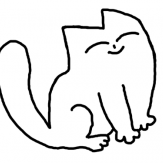
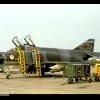


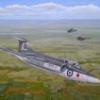
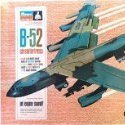


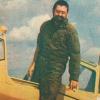
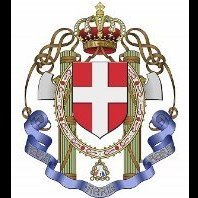
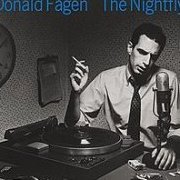
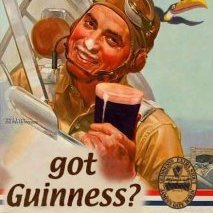

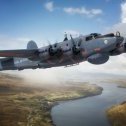
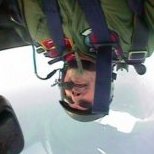






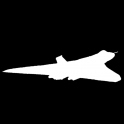



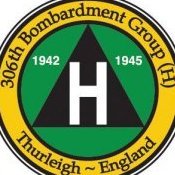

.thumb.jpg.d17ff607fc7e89ed057e63fcb6f2a888.jpg)


